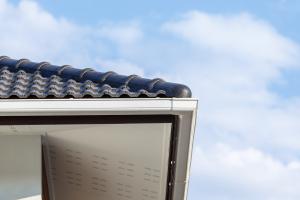
Hurricane Season and Gutter Systems: Understanding Vulnerabilities and Preventive Measures
“Hurricane season puts every drainage component to the test. A compromised gutter doesn’t just affect runoff—it can lead to structural and moisture problems throughout the property,” said Rayborn. “Systems that appear fine in mild rain often fail during sustained downpours and wind-driven storms.”
Gutter systems serve as the first line of defense against water intrusion during tropical weather. Without regular inspection and proper reinforcement, sections can become loose, clogged, or overwhelmed—leading to water pooling around the foundation, overflowing rooflines, and saturation of fascia boards.
Common Gutter Failures During Hurricane Season
Heavy rain combined with debris-filled wind gusts increases the likelihood of gutter failure. In many cases, damage occurs not due to the volume of rain alone, but because the system is unable to process that volume efficiently.
The most common points of failure include:
Detached Gutters: Wind lift or excessive weight from backed-up water causes sections to sag or detach from the fascia.
Clogged Downspouts: Leaves, twigs, or shingle granules block water flow, causing overflow at the gutter edge.
Improper Slope: Gutters installed without adequate pitch prevent water from draining efficiently, leading to stagnation and overflow.
Rust or Corrosion: Older metal systems may corrode at joints or fasteners, weakening structural integrity just as peak weather arrives.
Undersized Systems: Homes with gutters not designed to handle high-capacity rainfall face faster overflows and splashing near the foundation.
These failures create secondary problems such as soil erosion, siding stains, interior water infiltration, and even basement flooding in some properties.
Preparation Steps Before the Season Peaks
Gutter systems should be treated as part of the home’s storm readiness checklist. Seasonal preparation reduces the chance of mid-storm emergencies and long-term damage.
Recommended steps include:
Cleaning All Gutter Channels: Removal of leaves, pine needles, and roof debris helps maintain proper water flow. Even partial blockages can significantly reduce capacity during a heavy storm.
Flushing Downspouts: Testing downspouts with a hose confirms proper drainage and exposes any unseen clogs or disconnections.
Inspecting Hangers and Fasteners: Reinforcing mounting brackets and screws helps prevent sagging or dislodgment during high winds.
Checking for Leaks or Separation Points: Caulk or sealant should be applied at seams where water shows signs of dripping.
Evaluating System Size and Coverage: Homes with roof additions or increased square footage may need additional downspouts or upgraded capacity.
These basic steps can be handled by a gutter professional or during routine roof maintenance visits prior to hurricane season.
Risk Zones Around the Property
When gutters fail, water damage often begins at predictable points. Knowing these zones can help identify potential vulnerabilities before the season begins.
Low-Slope Roof Edges: These areas are prone to pooling, especially when gutters are undersized or clogged.
Foundation Perimeter: Overflow from blocked gutters or disconnected downspouts saturates the ground directly below, increasing hydrostatic pressure on the foundation.
Entry Points and Windows: Improper drainage above doors and windows leads to water intrusion, even in tightly sealed frames.
Fascia and Soffit Boards: Water backing up from clogged gutters enters fascia gaps and damages wood framing from the inside out.
Mitigation measures—such as extended downspout drains, splash blocks, and seamless joint upgrades—reduce risks in these zones.
Post-Storm Assessments
After any major storm, a visual inspection of the gutter system is recommended. Dislodged sections, minor warping, and hidden blockages can develop even if the system appeared to function normally during the event.
Post-storm evaluations should check for:
Water stains on siding
Washed-out landscaping near downspouts
Debris buildup near gutter brackets
Loose or missing fasteners
Pooled water along eaves or at ground level
These signs often indicate partial failure and should be addressed before the next storm arrives. Delaying small repairs often leads to larger issues requiring full replacement.
Regional Concerns Along the Gulf Coast
In areas like southern Mississippi and coastal Louisiana, high humidity, dense tree cover, and frequent storm events place constant pressure on gutter systems. The frequency of tropical weather makes proactive maintenance even more important. Gutters in these regions face seasonal wear not just from rain, but also from windborne debris, falling branches, and heat-related expansion and contraction.
Materials such as aluminum or copper withstand corrosion better than older galvanized options. Seamless systems also reduce leak points and minimize the chance of separation during storm impact. For properties with steep roofs or surrounded by pine and oak trees, additional guards or screen systems may be advisable.
Morgan Thomas
Rhino Digital, LLC
+1 504-875-5036
email us here
Visit us on social media:
Facebook
Distribution channels: Building & Construction Industry, Culture, Society & Lifestyle, Environment, Real Estate & Property Management
Legal Disclaimer:
EIN Presswire provides this news content "as is" without warranty of any kind. We do not accept any responsibility or liability for the accuracy, content, images, videos, licenses, completeness, legality, or reliability of the information contained in this article. If you have any complaints or copyright issues related to this article, kindly contact the author above.
Submit your press release

